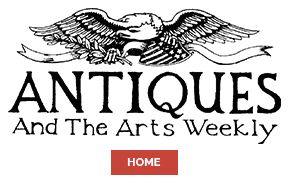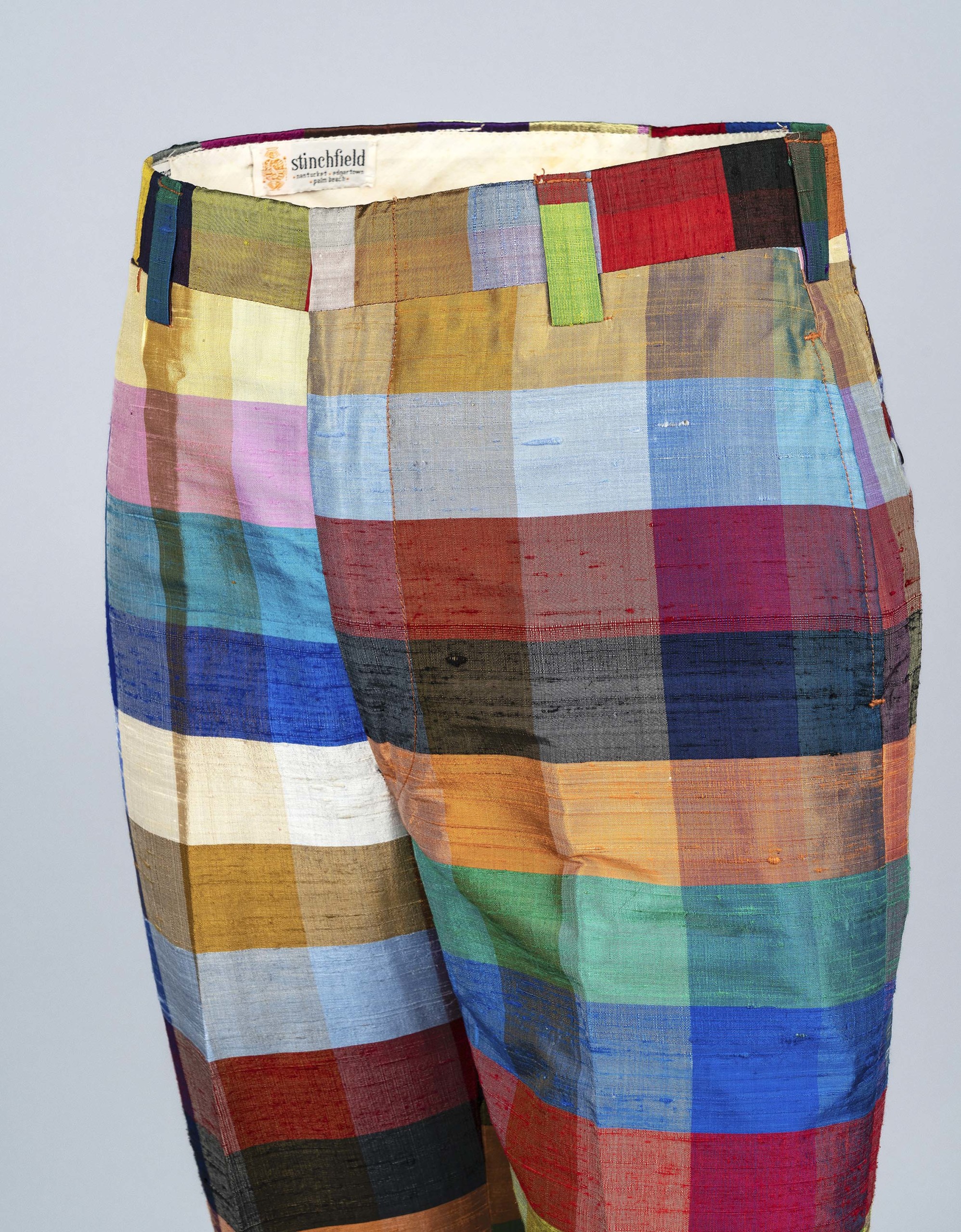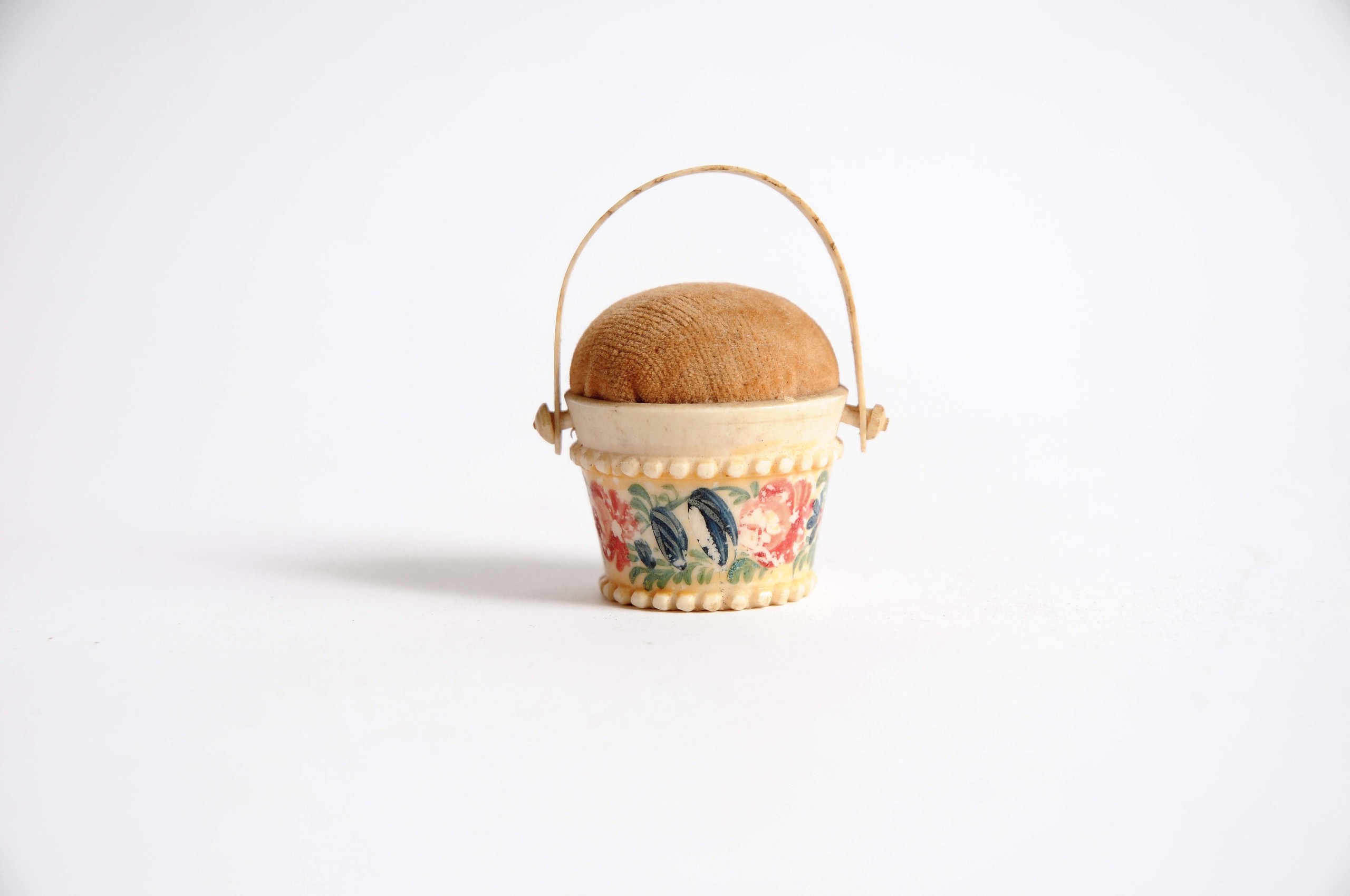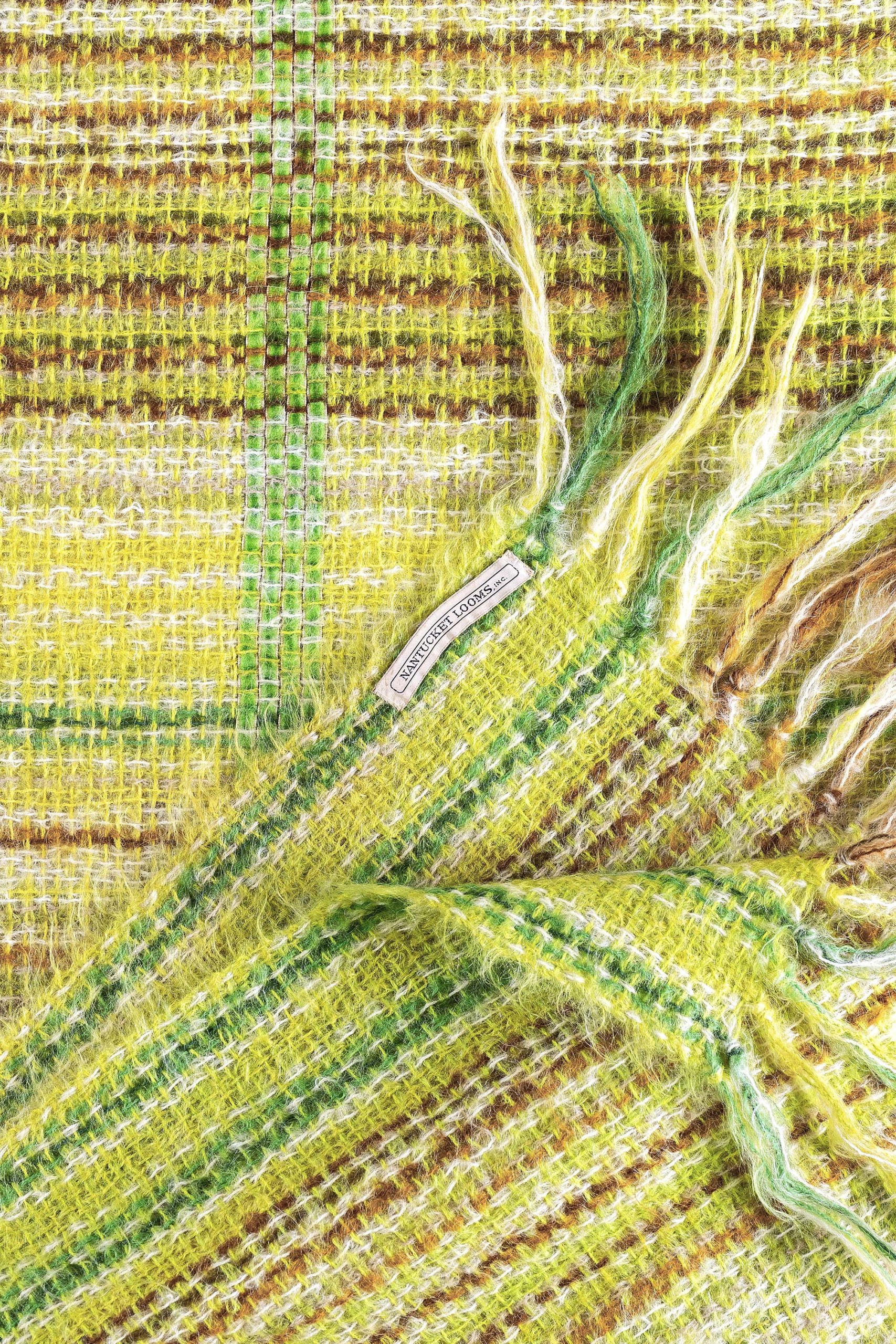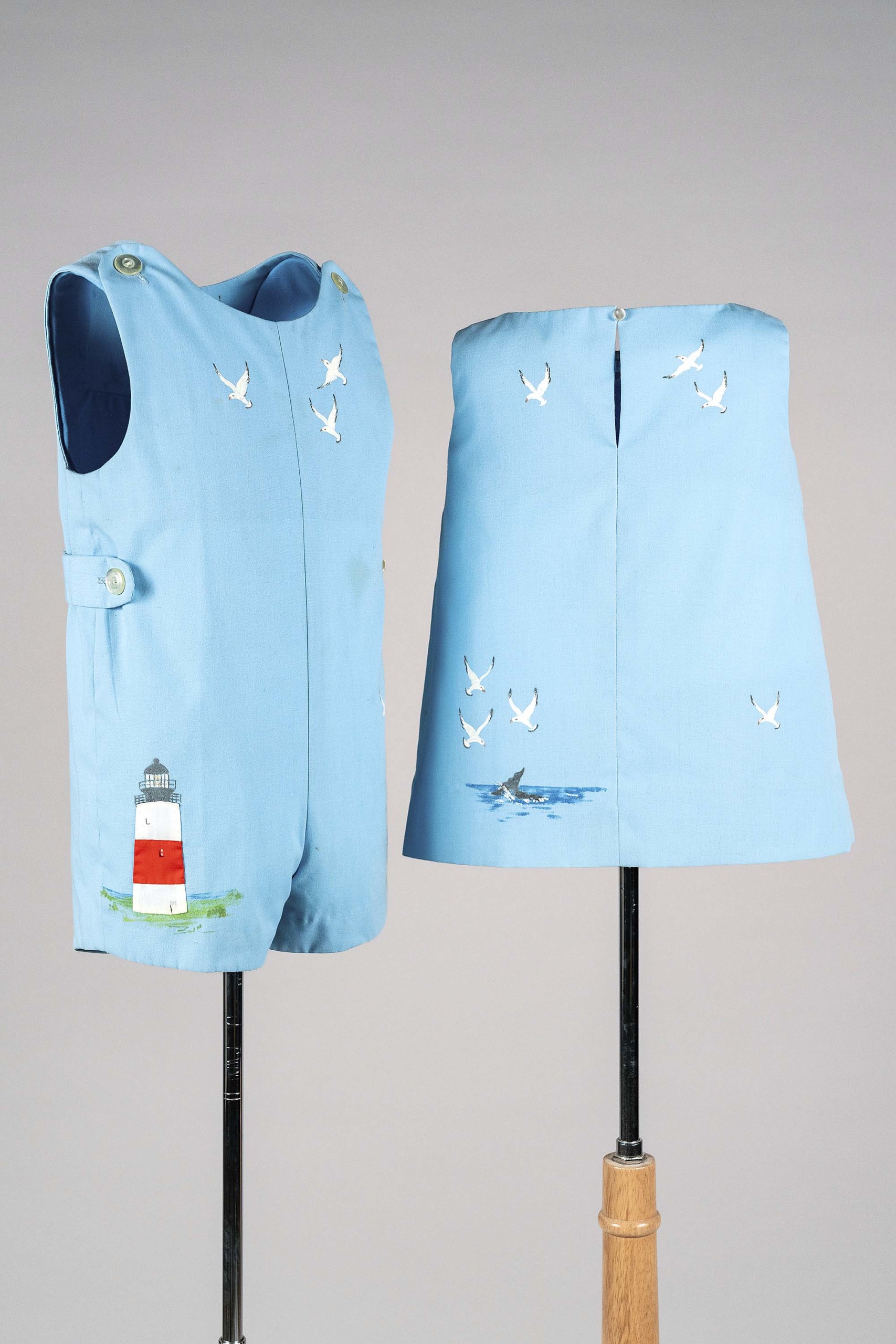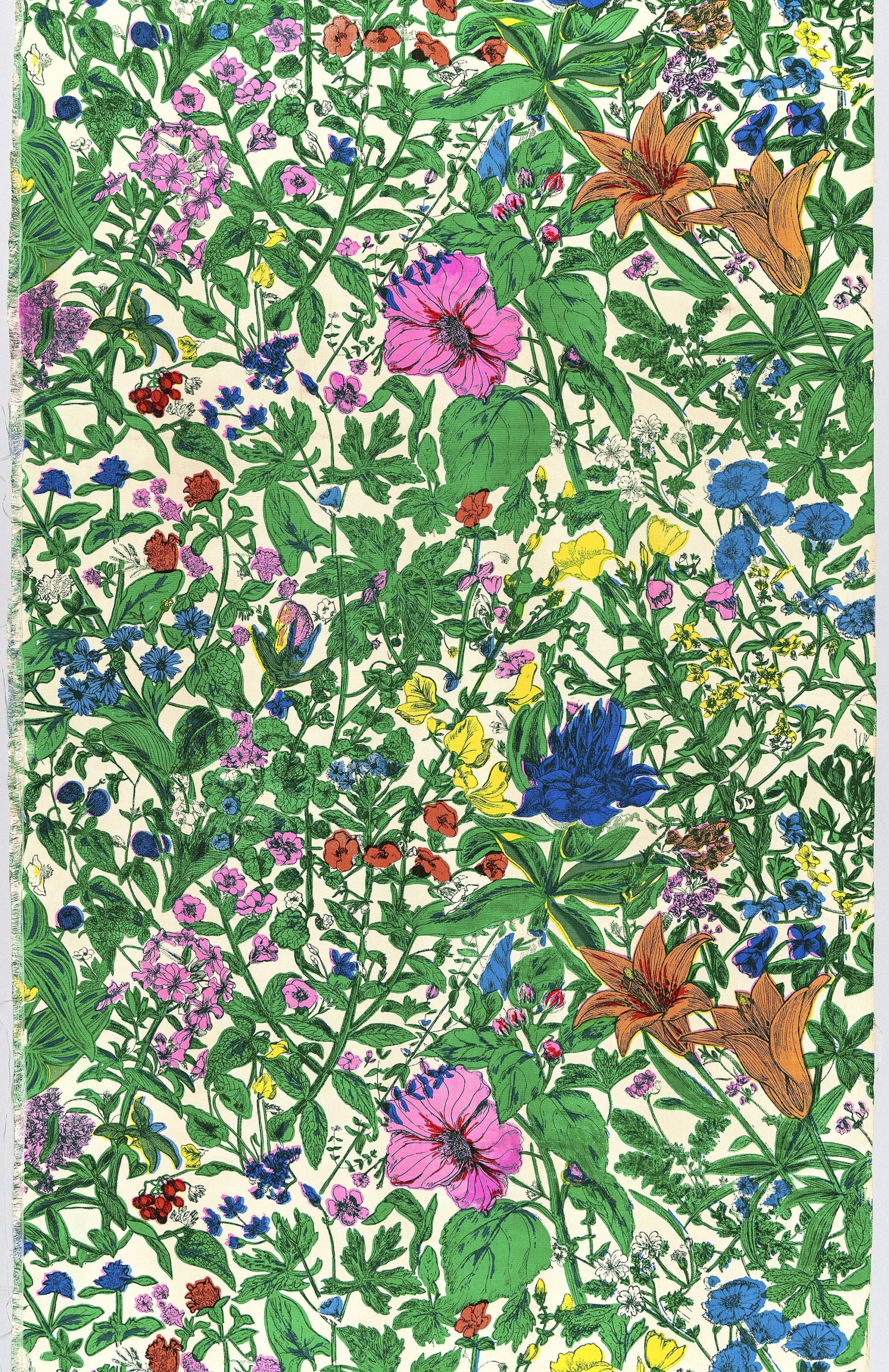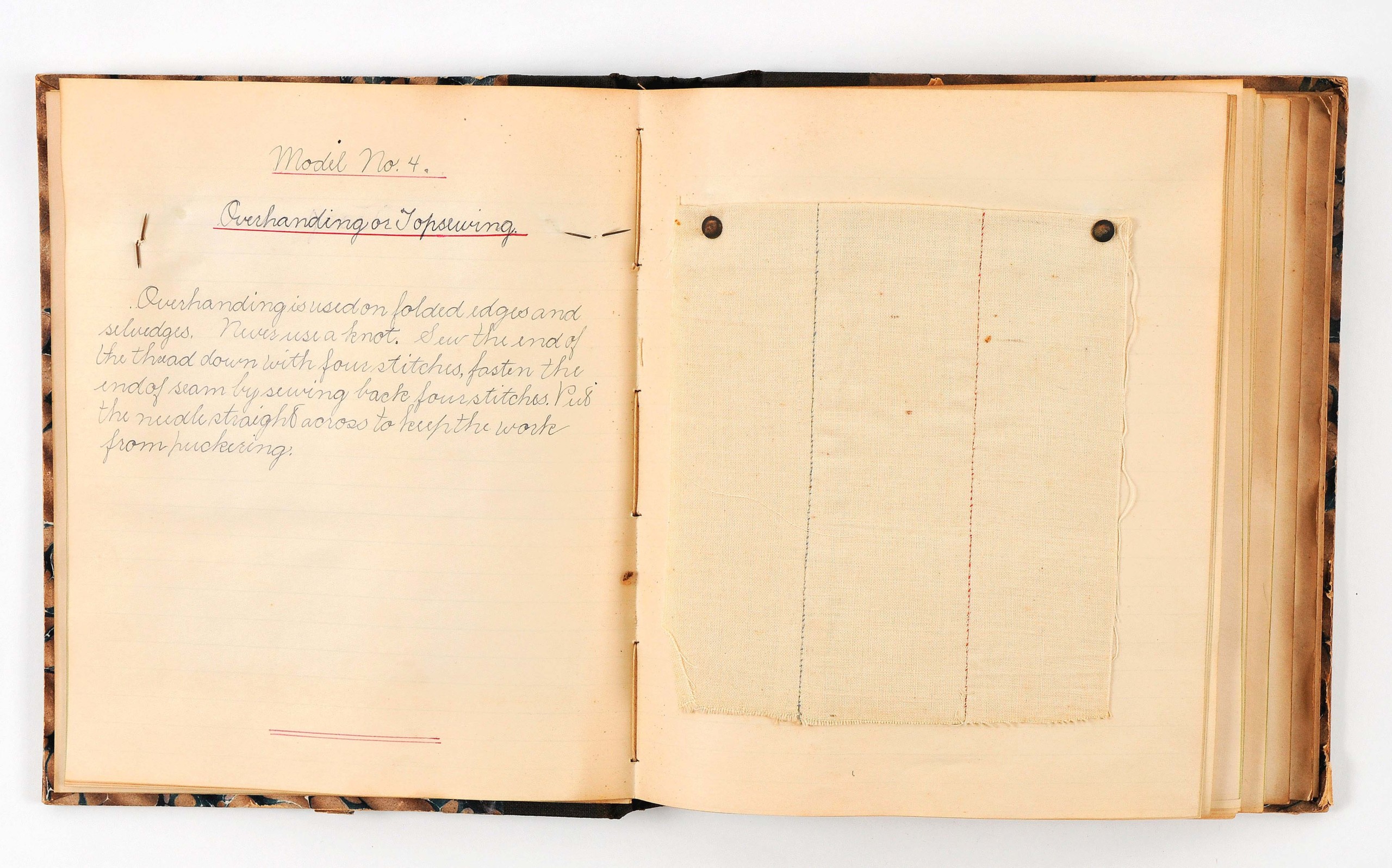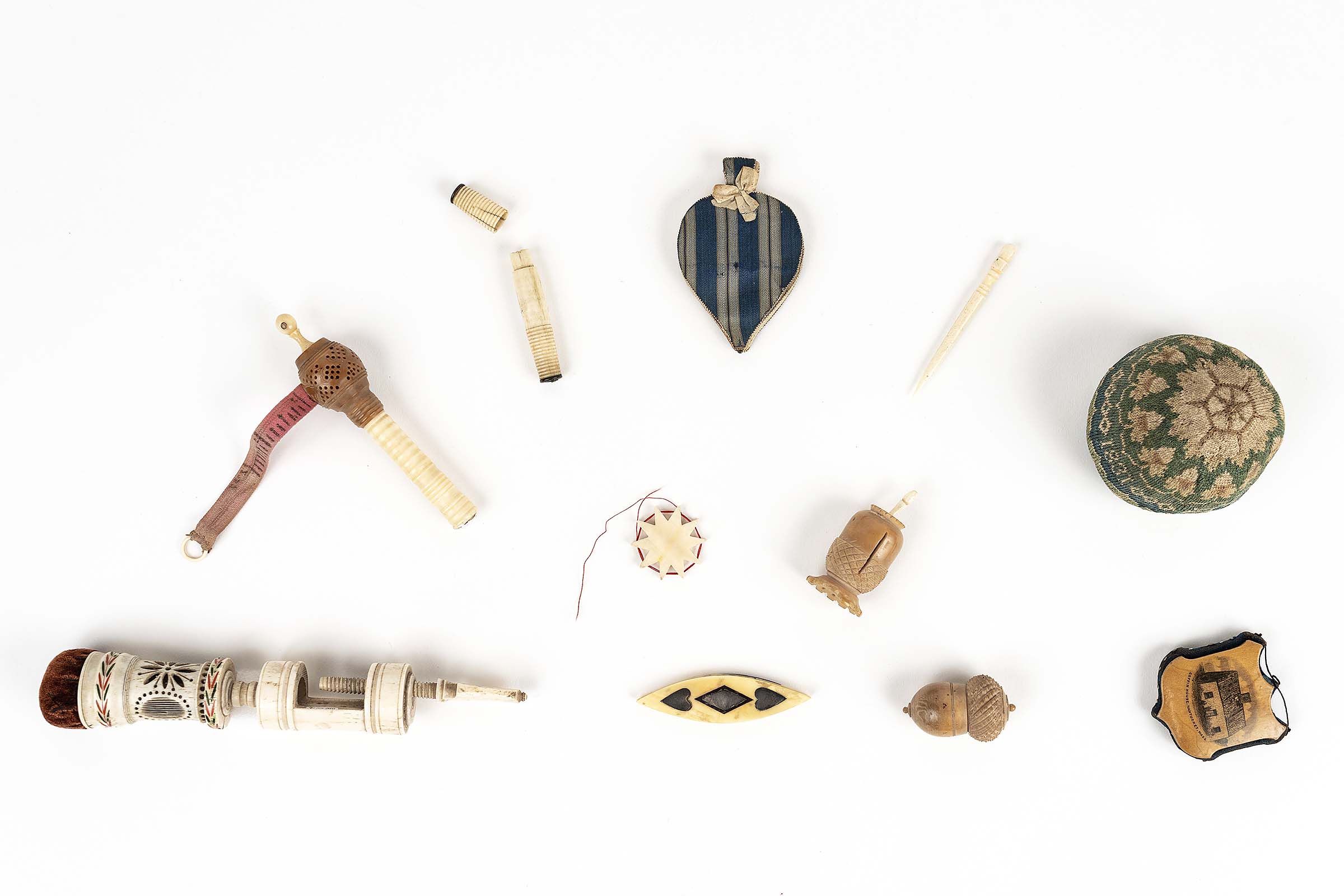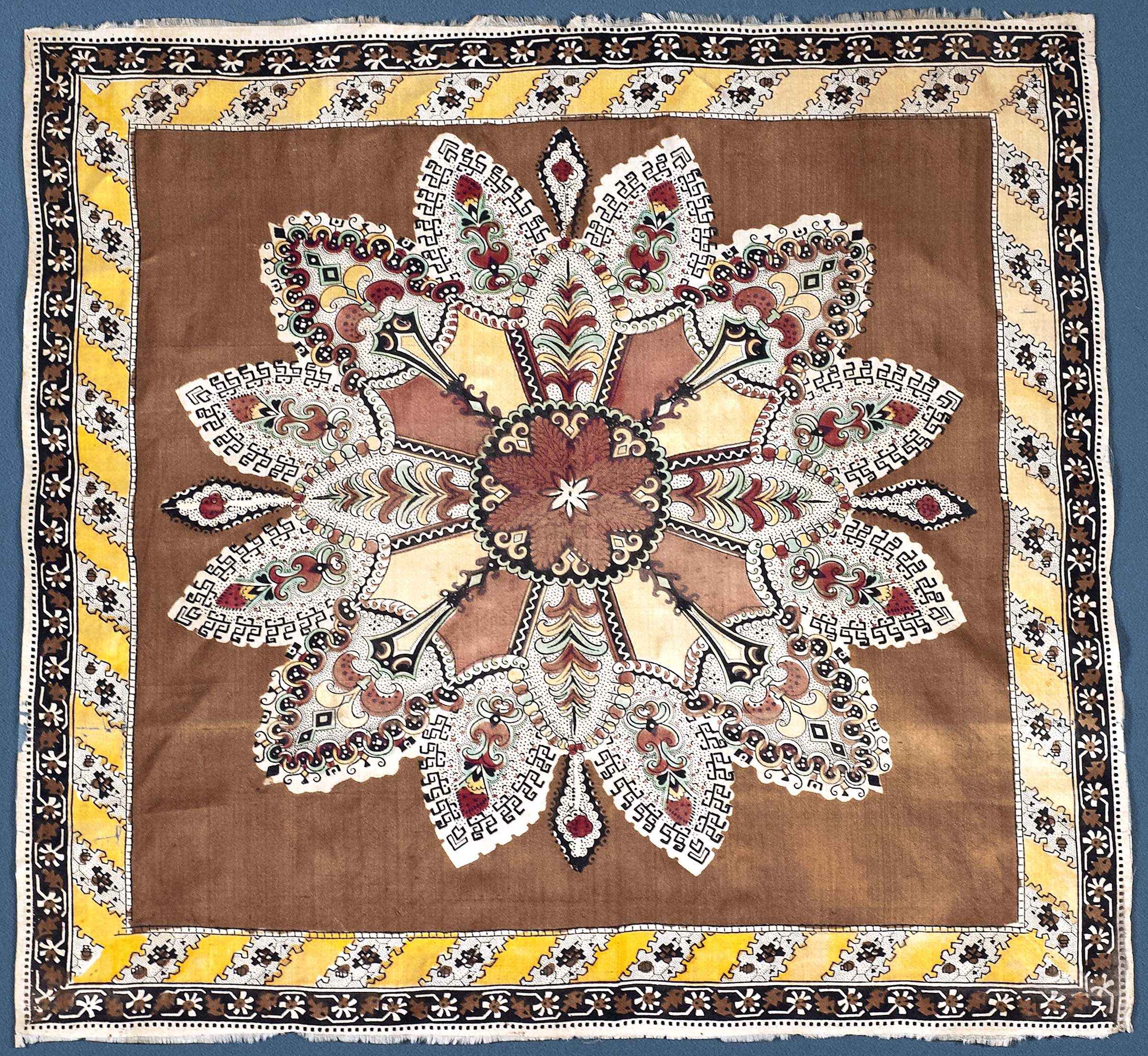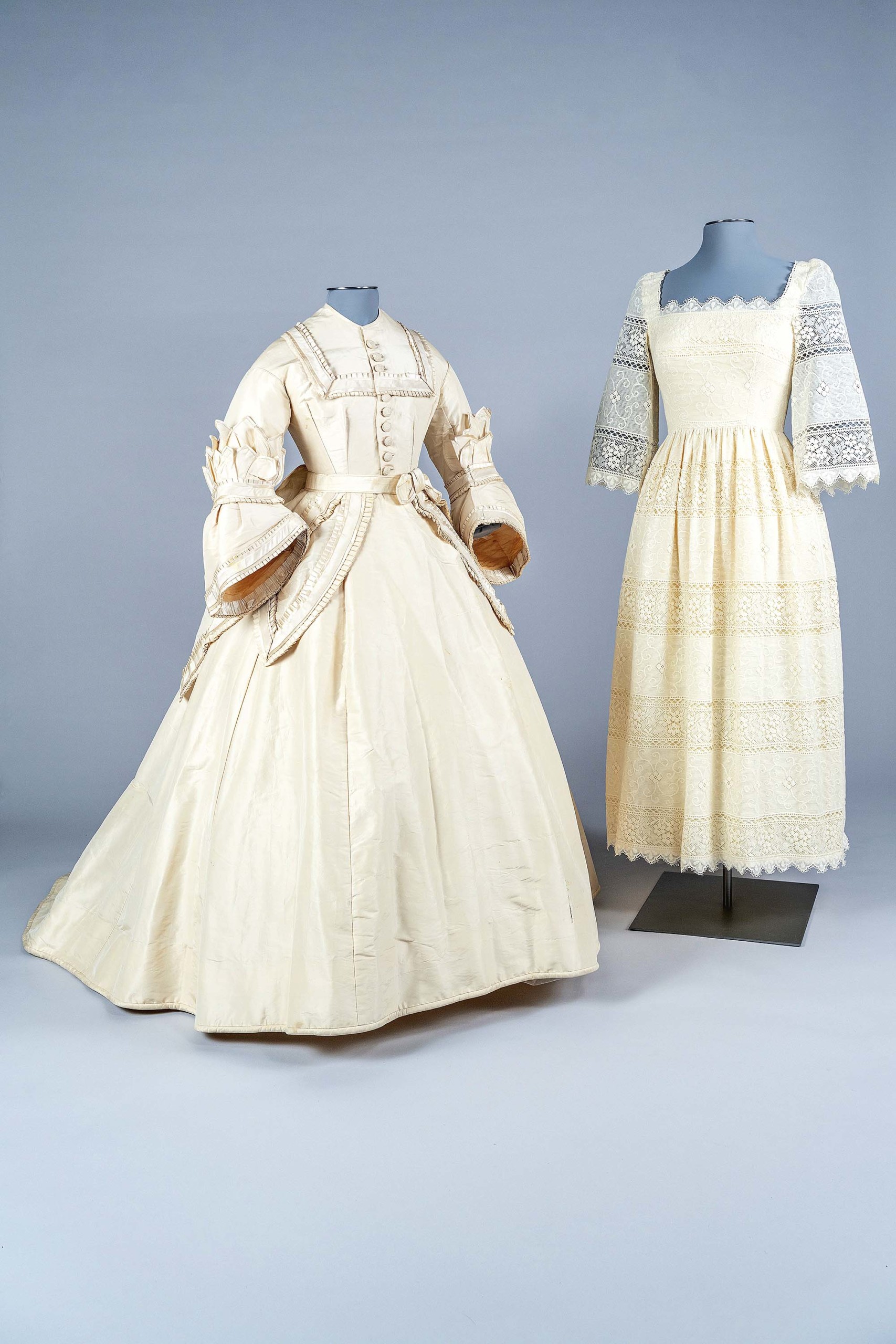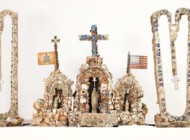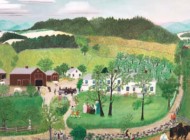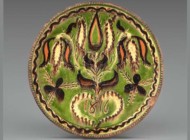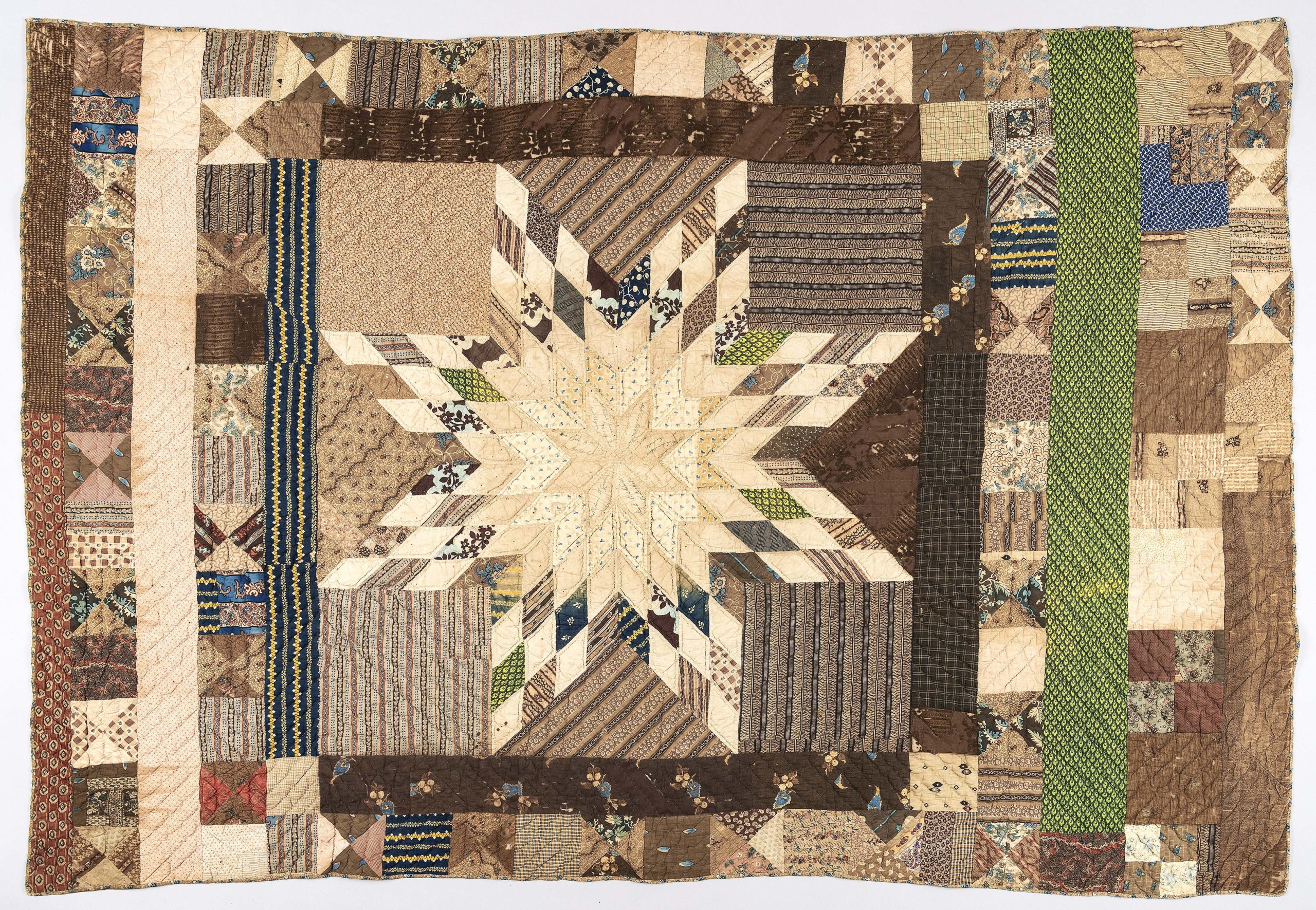
Friendship quilt made by Nantucket woman, 1849, cotton. Gift of Maud E. Backus, 1936.22.1.
By Madelia Hickman Ring
NANTUCKET, MASS. — Those who are lucky enough to visit Nantucket this coming summer can look forward to sun-filled days at the beach, biking around the island, exploring historic lighthouses and partaking in upscale or casual dining either in the cobblestoned downtown or elsewhere. Another “must” for tourists and residents alike is a new exhibition — installed in the McCausland Gallery at the Nantucket Historical Association’s (NHA) Whaling Museum — that features more than 150 items from the NHA’s costume and textile collection and explores, through a thematic approach rather than chronological one, what those items can tell us about the history of the island and its people.
“Behind the Seams: Clothing and Textiles on Nantucket” is curated by Jennifer Nieling, an independent costume and textile specialist whose association with the NHA dates back to 2015, when, as a summer intern, she began documenting the textile collection. A year later, the NHA received a grant from the Institute for Museum and Library Services to inventory, catalog and rehouse the 2,000-piece collection. During an 18-month process, which was led by Nieling, the potential for research and display became apparent. Nieling’s work, alongside that of interns Meg Pierson and Ariana Bishop, and volunteer Robin Campbell, plans for a thematic presentation were developed that manifested itself in “Behind the Seams.”
“The exhibition centers around the themes of ‘Making’ (Materials; Global Trade & Local Commerce; Sewing & Handcraft) and ‘Meaning’ (Life Events; Community & Identity), and these come together in the final section of ‘Twentieth Century Making & Meaning’ (Craft Revivals; Made on Nantucket™). ‘Sustainability Highlights’ are sprinkled throughout the exhibition in almost every section,” Nieling told Antiques and The Arts Weekly.
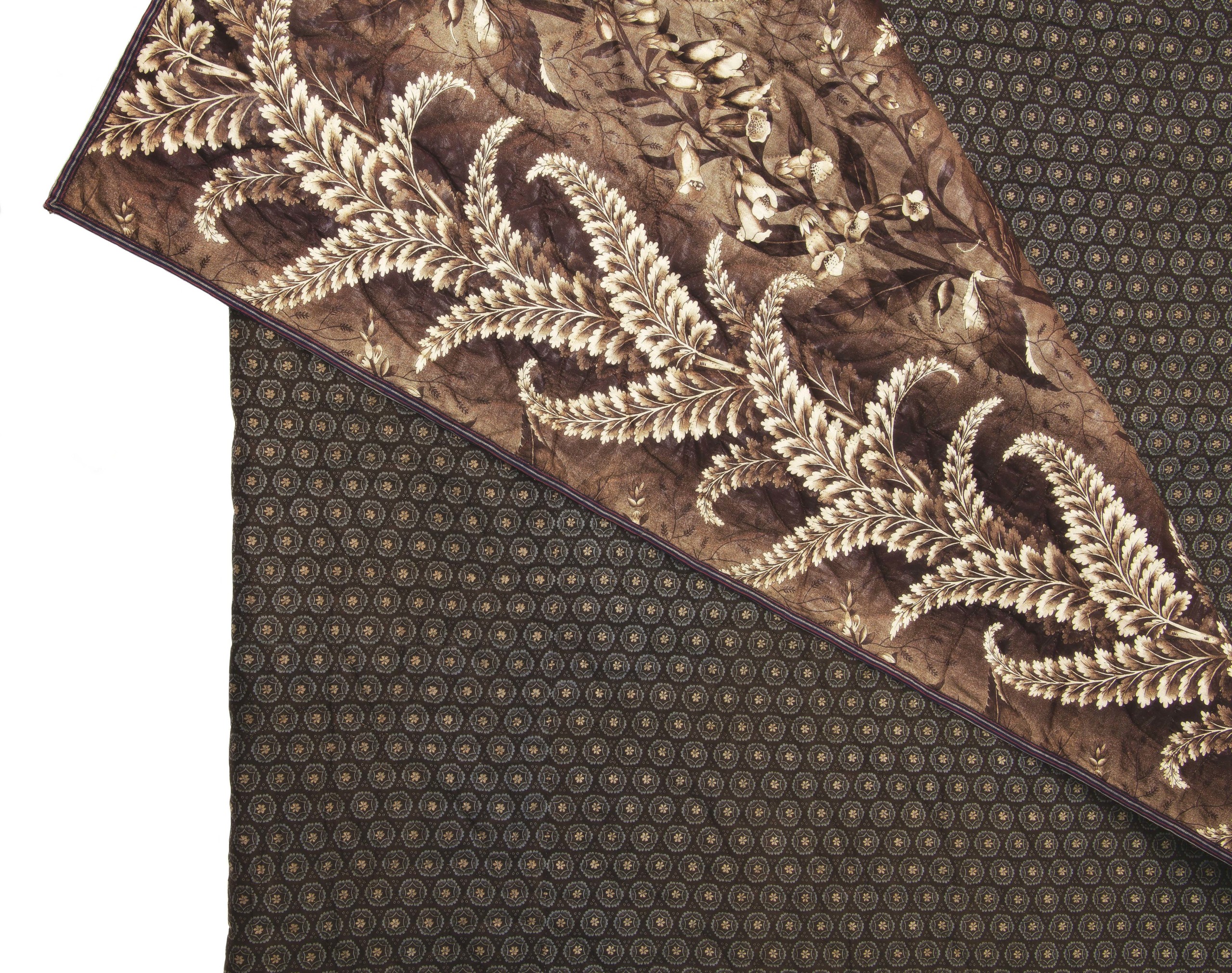
Wholecloth quilt, made by Phebe Starbuck Swain, circa 1830, using British-made printed glazed cotton top and filled with Nantucket wool. Gift of John Chadbourne, 2008.29.1.
Though each of the more than 150 objects selected for inclusion tell a story, some have more visual impact that draw the viewer’s eye first. In the “Making” section, there is a wholecloth quilt made of English cotton said to have been smuggled onto the island through the coastal blockades by the British during the War of 1812. Made by Phebe Starbuck Swain (1795-1882) circa 1830, it is stuffed with Nantucket wool.
Items from the Atlantic Silk Company — including an apron and handkerchief — demonstrate some of the items made on the island in the 1830s while the connection to the outside world and international trade can be traced through a Chinese silk shawl and a little girl’s dress that was made in Paris.
A discussion of handcraft and sewing is prompted by a circa 1900 chainstitch treadle sewing machine made by Willcox & Gibbs. Dialogue is furthered through a sewing notebook that was used by girls at the Coffin School, a private charity school founded in 1827 that in 1905 began teaching girls in grades 8-12 skills for constructing and caring for clothing and textiles.
Two wedding dresses — worn 100 years apart — “remind us how clothing can be tied to significant life moments and hold great emotional weight,” noted Nieling. These are shown in the “Meaning” section alongside a Nineteenth Century Quaker dress and Twentieth Century uniforms that speak to the identity — the roles, communities and values — of their different wearers.
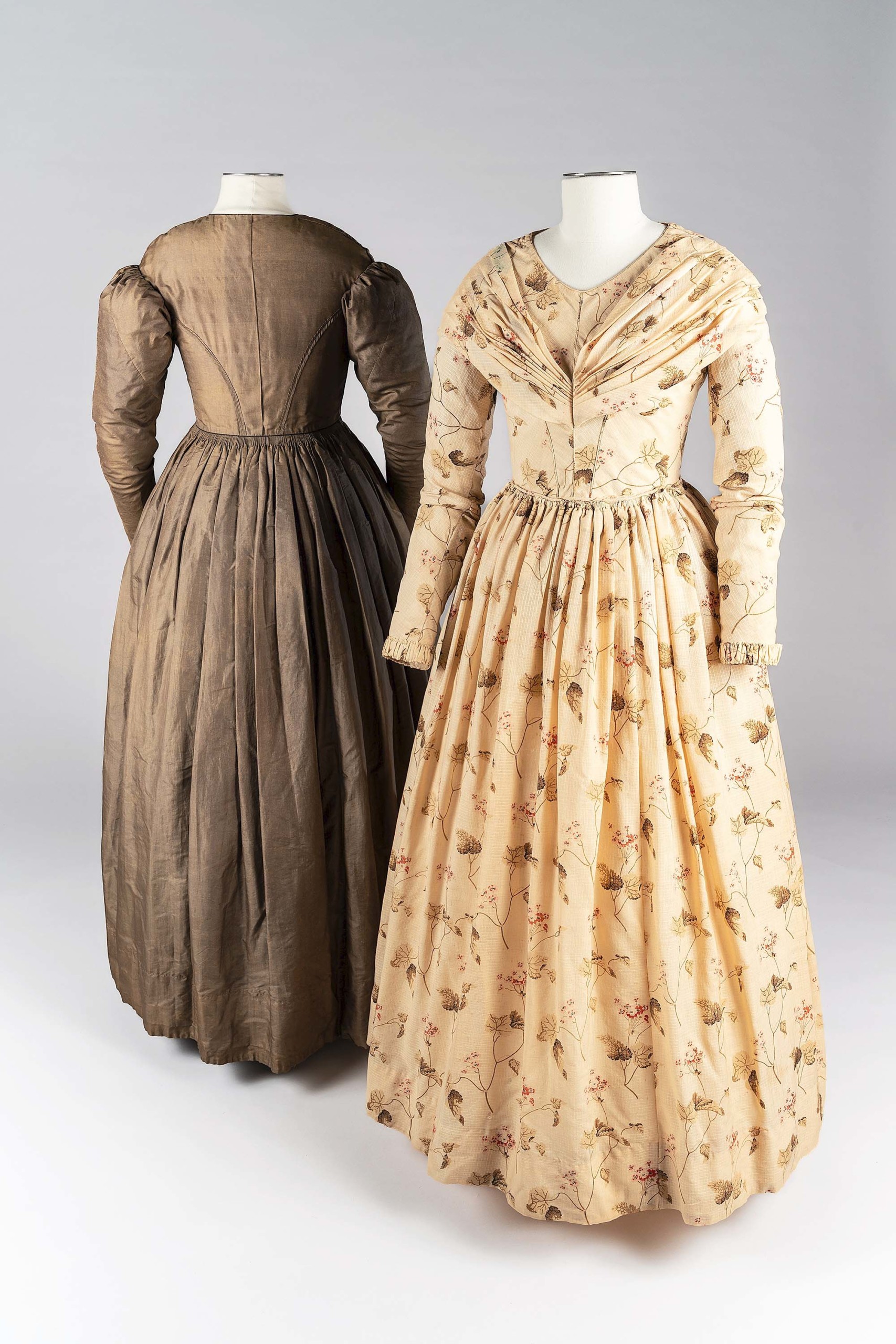
(Left) Quaker dress, 1830s, silk, linen, cotton and metal. Gift of Elizabeth Kite, NHA 1905.10.1; shown with a day dress owned by Sarah Coffin Akin, 1840s, cotton, silk and wool. Gift of Margaret Alden Simmonds, 1956.21.3.
The final section — “Twentieth Century Making & Meaning” — presents Nantucket made-related textiles, clothing and ephemera that anchors a discussion of the craft revival of the 1960s while pieces made by several on-island brands, dating from the present back to the 1950s, forms the “Made on Nantucket ™” segment.
Some objects in the show have never previously been exhibited, including several pieces from a donation of textiles and ephemera given by Julie Beinecke Stackpole, the daughter of Mary Ann Beinecke, who worked with Andy Oates, a master weaver who had trained under Anni Albers at Black Mountain College; Beinecke and Oates established a weaving workshop to reproduce historic textiles for the Jared Coffin House on Nantucket; this operation became Nantucket Looms.
Screenprinted fabric, designed by Leslie Tillett and D.D. Tillett for Lia Marks and the Cloth Company of Nantucket, were inspired by local wildflowers in the company’s circa 1966 “Nantucket Wildflowers” fabric; the Tilletts also designed cloth with whaling scenes and other locally-significant motifs.
Nieling shared some revelations that came to light as preparations for the exhibition were underway. “Thanks to more of the NHA’s historic records being digitized after the inventory project, we were able to identify a wonderful early Nineteenth Century man’s wool tailcoat in the collection as the one that Austin Strong, an island personality, community leader and actor wore to the Nantucket Main Street Fetes in the 1920s. The coat is on display along with photos of Strong wearing it. We also found that the Quaker dress in the exhibition (which, to our knowledge, has not been displayed before) was likely worn by a pregnant woman, based on the cut of the garment — which wasn’t really clear until we put it on a dress form.
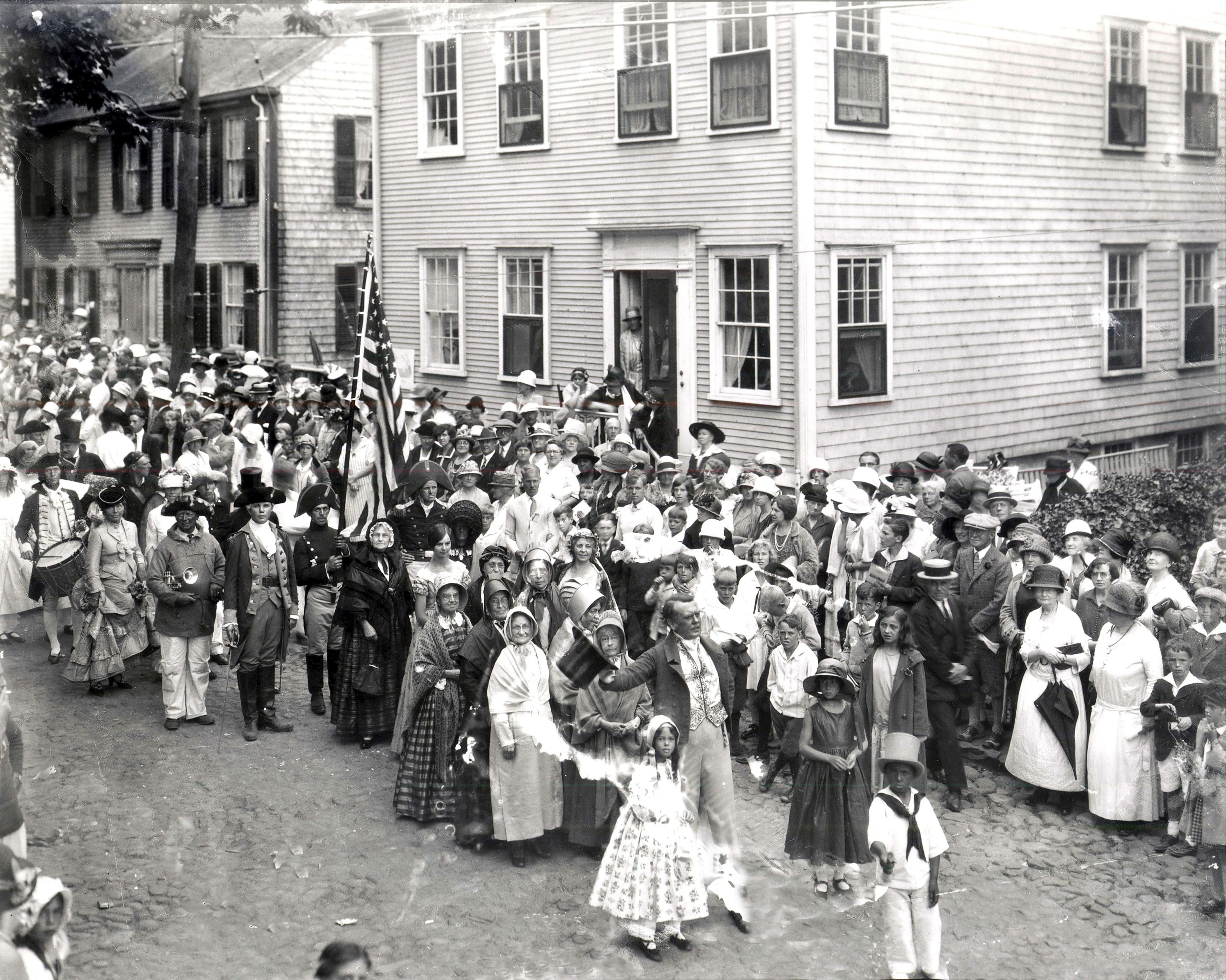
Austin Strong leading the Main Street Fete parade, 1923. Photograph by H. Marshall Gardiner (1884-1942). F598.
“I hope that visitors gain a deeper appreciation for clothing and textiles and that the exhibition encourages people to think about these items — which are so ubiquitous and often undervalued — in new ways,” Nieling shared when asked what she hoped some of the show’s legacy might be. “They can tell us so many rich stories about so many different aspects of history and life. I also hope that this exhibition inspires people to incorporate sustainable practices into their lives, to value and respect the textiles that we all use every day.”
“Behind the Seams: Clothing and Textiles on Nantucket” is on view at the Whaling Museum through November 2.
The Whaling Museum is at 13 Broad Street. For information, 508-228-1894 or www.nha.org.
